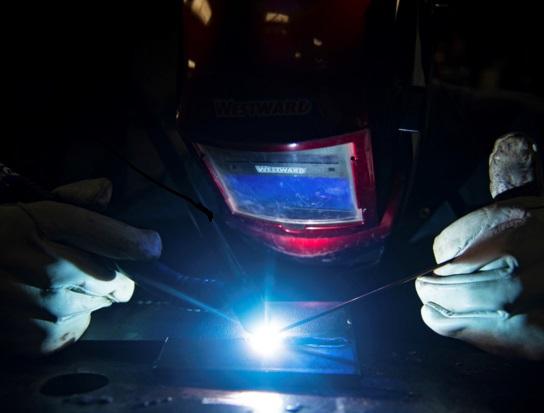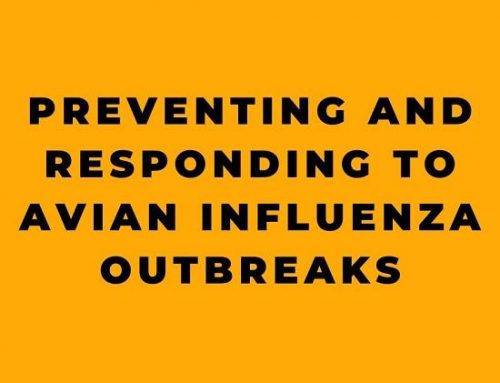As a welder, it’s essential to have the proper personal protective equipment (PPE) to protect yourself from hazards in the workplace.
Welding is a dangerous profession, and the potential consequences of an accident can be devastating. A welding injury is caused by exposure to intense heat, sparks, slag vapor or debris that arise from melting in the weld pool – all of which should not be taken lightly since they could lead to serious harm. Thus, it’s essential to recognize this occupational risk and take appropriate preventative measures against such accidents occurring. The Bureau of Labor Statistics (BLS) report on welding accidents is eye-opening; there were approximately 48 welding-related fatalities in 2020, and, based on the rate of injuries per worker, we know that there are well over 500,000 workers who receive some kind of injury related to welding every single year.
In this article, we will discuss the essential PPE for welders, including a welding helmet, gloves, protective clothing, safety glasses or goggles, a respirator or dust mask, ear protection, foot protection, and a first aid kit. By following this checklist and using the appropriate PPE, welders can reduce the risk of injuries on the job.
As you can see, the risk of injury is high when it comes to welding. It’s essential to take the necessary precautions to protect yourself while on the job. The proper use of personal protective equipment can make all the difference in preventing injuries and even fatalities. By following the checklist provided in this article, you can ensure that you have the right gear to keep yourself safe on the job.
- Welding helmet: A properly fitted welding helmet is essential to protect your eyes and face from the intense light and heat generated by welding. Look for a helmet that meets ANSI Z87.1 standards and offers adequate coverage. A welding helmet is one of the most important pieces of personal protective equipment for a welder. It is designed to protect your face and eyes from the intense light and heat generated by welding, as well as from flying debris and sparks. When choosing a helmet, it’s important to look for one that meets ANSI Z87.1 standards, which are the safety standards for impact-resistant eye and face protection. Additionally, it’s important to ensure that the helmet offers adequate coverage for your face and neck, and that it is properly fitted for maximum protection.
- Gloves: Welding gloves protect your hands from the heat and sparks generated by welding. Look for gloves made of leather or heat-resistant materials and that fit snugly to ensure maximum protection. Welding gloves are designed to protect your hands from the heat and sparks generated by welding. It’s important to choose gloves that are made of heat-resistant materials like leather, and that fit snugly to ensure maximum protection. Additionally, it’s important to ensure that the gloves have a good grip, and that they are flexible enough to allow for a full range of motion. Properly fitting gloves can also help to reduce the risk of hand injuries and burns.
- Protective clothing: Welding can generate intense heat and sparks, so it’s important to wear protective clothing that covers your entire body. Look for clothes made of heat-resistant materials like leather or Nomex. Protective clothing is an essential piece of personal protective equipment for welders. It is designed to protect your body from the intense heat and sparks generated by welding. It’s important to choose clothing that is made of heat-resistant materials like leather or Nomex, and that covers your entire body, including your arms and legs. Additionally, it’s important to ensure that the clothing is comfortable, and that it allows for a full range of motion. By wearing protective clothing, you can help to reduce the risk of burns and other injuries caused by welding.
- Safety glasses or goggles: To protect your eyes from flying debris, it’s important to wear safety glasses or goggles that meet ANSI Z87.1 standards. Safety glasses or goggles are an essential piece of personal protective equipment for welders. They are designed to protect your eyes from flying debris and sparks generated by welding. It’s important to choose glasses or goggles that meet ANSI Z87.1 standards, which are the safety standards for impact-resistant eye and face protection. Additionally, it’s important to ensure that the glasses or goggles fit properly, and that they are comfortable to wear.
- Respirator or dust mask: Welding can generate harmful fumes and dust, so it’s important to wear a respirator or dust mask to protect your lungs. Look for a respirator that is NIOSH-approved for the type of welding you’ll be doing. A respirator or dust mask is an essential piece of personal protective equipment for welders. They are designed to protect your lungs from harmful fumes and dust generated by welding. It’s important to choose a respirator or dust mask that is NIOSH-approved for the type of welding you’ll be doing, and that fits properly. Additionally, it’s important to ensure that the respirator or dust mask is comfortable to wear, and that it is properly maintained and cleaned.
- Ear protection: Welding can be loud and can cause damage to your hearing. It’s essential to wear earplugs or earmuffs to protect your ears. Ear protection is an essential piece of personal protective equipment for welders. They are designed to protect your ears from the loud noise generated by welding. It’s important to choose earplugs or earmuffs that are comfortable to wear, and that fit properly. Additionally, it’s important to ensure that the earplugs or earmuffs are properly maintained, and that they are replaced when they become worn or damaged.
- Foot protection: Welding can generate intense heat and sparks, so it’s important to wear protective footwear that covers your entire foot and ankle. Look for shoes or boots that are made of heat-resistant materials and that have steel toes and soles. Foot protection is an essential piece of personal protective equipment for welders. They are designed to protect your feet from the heat and sparks generated by welding. It’s important to choose shoes or boots that are made of heat-resistant materials and that have steel toes and soles to protect your feet from falling objects. Additionally, it’s important to ensure that the shoes or boots fit properly and that they are comfortable to wear.
- First aid kit: It’s important to have a first aid kit on hand to treat any injuries that may occur on the job. This should include bandages, burn ointment, and other basic first aid supplies. Having a first aid kit on hand is essential to be prepared for any injuries that may occur while welding. It should include basic items such as bandages, burn ointment, and other first aid supplies. Additionally, it’s important to ensure that the first aid kit is easily accessible and that all employees know where it is located. In case of an emergency, having a first aid kit on hand can help to reduce the risk of serious injuries and provide immediate medical attention.
There are things that even adequate PPE cannot protect a welder against. Awareness of flammable vapors or combustible materials in the welding environment is one of the most important things a welder can do to reduce the risk of death. Before starting any welding task, it is important to identify and remove any potential sources of ignition, such as oil, grease, or other flammable liquids. Welders should also be aware of the dangers of welding near or on containers that may contain flammable vapors. Adequate ventilation or the use of fume extractors can help reduce the concentration of flammable vapors in the air. By being aware of these potential hazards and taking the necessary precautions, welders can greatly reduce the risk of fire or explosion, and protect themselves from serious injury or death.
In conclusion, personal protective equipment for welders is an important aspect of welding safety. By following this checklist, you can ensure that you have the right gear to keep yourself safe while welding. Remember to use a properly fitted welding helmet, heat-resistant gloves, protective clothing, safety glasses or goggles, respirator or dust mask, ear protection, foot protection, and a first aid kit on hand. Stay safe and stay informed.
References:










